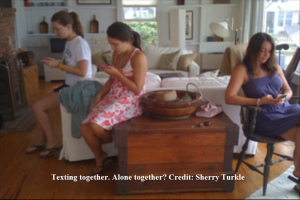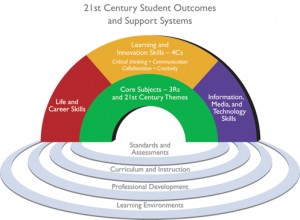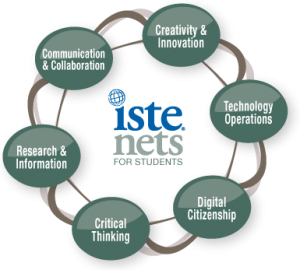In my last blog, I spoke about the importance of developing and cultivating relationships with students. I referred to Sherry Turkle and her groundbreaking book, Alone Together. It explored the effects of modern social media on our habits of being. She maintained that technology does not just change what we do, it changes who we are: our media self.
Alone Together?One of my favorite books is Alone Together: Why We Expect More from Technology and Less from Each Other by Sherry Turkle (2011). If you are more visual, then check out her TED video from 2012, Sherry Turkle: Connected, but alone? |
 |
Is it Tragedy, Comedy, or Simply Perceptive?
I just recently read an article on the New York Times Bits blog: Disruptions: More Connected, Yet More Alone by Nick Bilton (Sept. 1, 2013). In it he explores a YouTube comedy video that has since gone viral: I Forgot My Phone by Charlene deGuzman.
To be honest, it is “funny” in the same way that Jonathan Swift’s A Modest Proposal was funny. Swift proposed cannibalism as a solution to the Irish dilemma of his time (way back in 1729 – yes, they had irony then). DeGuzman’s 2-minute film may not be as outrageous a proposal, but it is exceptional satire. I would call it poignant. Perhaps author Nick Bilton might agree.
The Case for Dystopia
I would make the case that we have done more than fall in love with our dystopias. We have become them. It is the literature genre that has become on-screen blockbuster.
Have you read or seen The Hunger Games? Katniss Everdeen has become a modern hero of mythic proportions. She represents the triumph of indomitable human will over the grinding of the machine. Few would argue that we really want a series of games that end in death matches, but then again, few might argue that it would be a hit reality series if it aired on cable or the web.
We have a strong history of dystopias in our literature and filmmaking. We have classic novels such as George Orwell’s 1984, Ray Bradbury’s Fahrenheit 451, and Aldous Huxley’s Brave New World. We have movies like I, Robot (a concatenation of the robot books by Isaac Asimov), and Philip K. Dick’s Do Androids Dream of Electric Sheep (made into the movie Blade Runner). We rarely see utopian myths produced except in cartoon versions. If they were to be written, then they would likely be dismissed as naïve. Have those dystopian societies become the cool lifestyle choice?
The Modern Classroom: Is It Cool to Be Smart?
Let’s look at the modern urban classroom. Young Black boys in America achieve at markedly lower rates than their counterparts in other races. Why? Rather than focus on race or poverty – both legitimate contributors – I would rather focus this blog on the stories we tell ourselves including our hero myths. For too many urban children, it is just not cool to be smart. Peer pressure can reveal itself as an ugly beast in this context. In my opinion, that is why many charter academies are well positioned to combat peer pressure. They create a new environment for status as well as learning. It is cool to be an achiever.
Madyun (2011) connected Social Disorganization Theory to educational outcomes for Black youth. What occurred to me was that the classroom was a type of community setting – a local extended family in situ. All the teacher has control of is how children interact. Lectures rarely work in this regard. However, the teacher can structure the collaborative norms so that students work with each other in learning activities and learn respect for each other.
The only thing to combat social disorganization is social organization. The only thing that can combat negative relationships are positive relationships. That is the instructional approach I advocate. Build a learning platform and a “story” for collaborative success.
Media Provides a Context for Understanding Ourselves
Stories – and that includes movies and YouTube – create a literary context to explore our current social dilemmas and the deeper questions that concern us. Satire is built on the belief that certain absurdities can be recognized as such is presented in the right way. I Forgot My Phone is modern satire. It suggests an increasing awareness of self and others, of how we interact. It is instructive that people interviewed in Bilton’s blog referred to the video as “sad.”
How we communicate is part of who we are. Because we have changed many of the foundations of how we communicate, we have changed who we are. The very nature of the social flux that welds us together has changed in composition. Perhaps the new alloy will be stronger. One thing is certain: the social syntax is different.
Escapism or Paradox?
Of course, escapism does not necessarily equate with the desire to become. One can watch the Vampire Diaries or True Blood without wanting to become a blood sucker. It is important to differentiate our love affair with the darker side of human nature from our need to explain it. I am not a gamer, but I recently saw a review of the recently released video game called Grand Theft Auto 5. I wondered just how the myth of this hero plays out if extended to community.
Human nature is complicated. Perhaps – to quote Winston Churchill from a different era – it is a riddle, wrapped in a mystery, inside an enigma. Yet we teachers are left to fathom it all. Our media selves.
How it relates to teaching and learning
This is now the essential question: How does dystopia and being alone together figure in the modern classroom? What are its implications for the modern teacher? When I first started writing this, I found myself going down a dark path, perhaps trapped by a device of my own making. I realize that one can not make a judgment about the new language except that it is occurring right now. In other words, we as teachers need to create a new Utopia for our students. As I went further down the path, I realized that the power of collaboration was malleable. It could be molded.
What? Doesn’t sound like a realistic plan? Of course it is! Teachers create a classroom environment everyday. I am reminded of a scene from an old movie favorite of mine, The Emerald Forest. It takes place in a South American rain forest. An engineer (Powers Booth) is searching for his son who has been abducted. He comes across a helpful tribe. The engineer asks the chief why he doesn’t just order his tribe to do something they otherwise would never do. The chief responds, “If I told them to do things they do not want to do, I would not be chief for long.” That line always resonated with me.
Perhaps classroom management is similar. We need to be in tune with our students, speak some of the same language, and connect with them. Don’t confuse this with abdicating responsibility. Rather it is modeling, scaffolding and the social construction of an effective learning environment.


